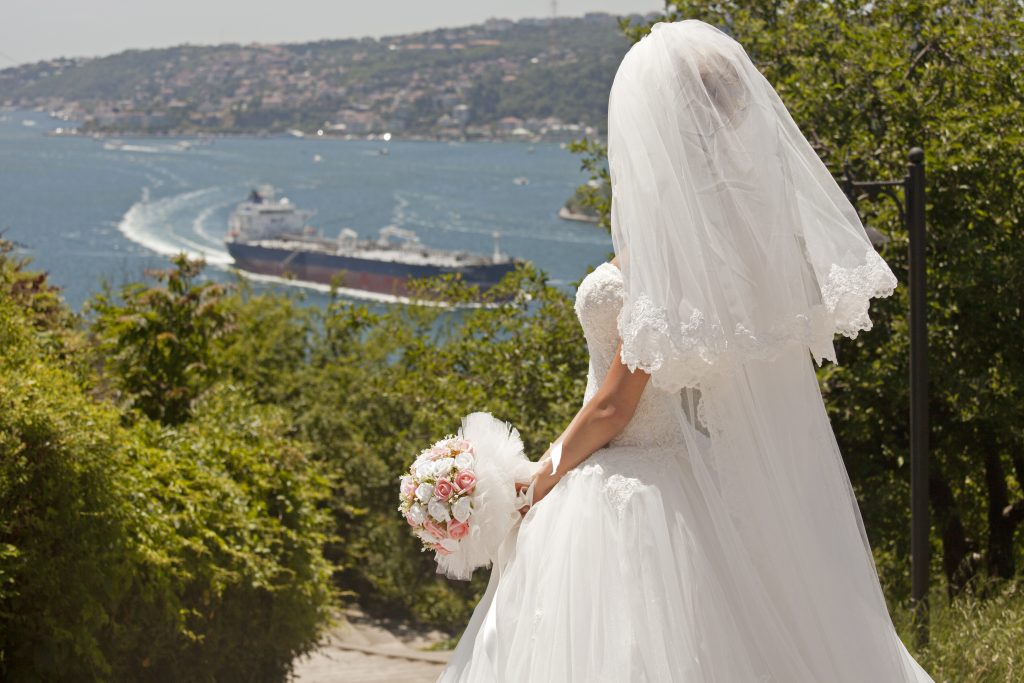The origins of this iconic bridal attire hold a fascinating narrative that spans centuries and cultures. From its humble beginnings to its modern-day symbolism, the journey of why wedding dresses are white unveils a tapestry of tradition, influence, and meaning that continues to shape the way we view bridal fashion.
Historical Background of Wedding Attire Colors
In the 1700s and 1800s, brides steered clear of white wedding dresses due to its association with mourning, opting instead for a rich palette of colors to adorn themselves in extravagant displays of wealth and status. During this period, color symbolism played a significant role in bridal fashion, with red being a popular choice, especially among the wealthy. Brides showcased their affluence through jewel-toned dresses embellished with fur, gold, and silver, symbolizing prosperity and social standing. Historical influences, such as Margaret of York’s heavily jeweled dress in 1468, set the stage for opulent bridal attire. These traditional norms dictated that brides use their wedding attire to make a statement about their wealth and status, leading to a vibrant array of colors in their wedding gowns. The choice of color in wedding attire during this era was not merely a fashion statement but a reflection of societal norms and values, showcasing the bride’s position and affluence in a visually striking manner.
Queen Victoria’s Influence on White Wedding Dresses
Queen Victoria’s transformative impact on the evolution of white wedding dresses reverberates through centuries of bridal fashion history, reshaping traditional norms and setting new standards for bridal attire. Queen Victoria’s 1840 wedding to Prince Albert marked a significant turning point in bridal fashion. Her choice of a white silk and satin dress with Honiton lace not only showcased her royal influence but also revolutionized the symbolism associated with wedding attire. By selecting white, Victoria imbued the dress with connotations of purity, innocence, and love for her groom. This departure from the then-popular colorful and elaborate dresses paved the way for a new era in bridal fashion. Godey’s Lady’s Book further solidified white as the ideal hue for brides in 1849, cementing Queen Victoria’s historical impact on bridal attire. The traditional symbolism of the white wedding dress as a representation of purity and love can be traced back to Victoria’s royal choice, which continues to influence brides worldwide to this day.
Symbolism and Significance of White Wedding Dresses
The symbolism and significance of white wedding dresses trace back centuries, embodying purity, innocence, and love in bridal attire. White symbolizes purity and innocence, reflecting the unsullied heart a bride offers to her partner. The white dress is a traditional choice for brides, symbolizing the purity and good sense epitomized by Queen Victoria’s iconic white gown. Delicate lacework and intricate details on white dresses accentuate the bride’s features, enhancing the romantic tradition of weddings. White wedding gowns have evolved over time, transitioning from symbolizing virginity to representing prosperity and commitment in modern weddings. The evolution of white dresses in bridal fashion showcases the cultural impact and enduring tradition associated with these iconic garments. The white wedding dress trend has become a timeless and elegant choice for brides, continuing to be a cornerstone of traditional weddings worldwide.
Evolution and Adoption of White Wedding Dresses
The historical evolution of white wedding dresses showcases a remarkable shift in bridal fashion, highlighting a significant departure from previous color traditions towards a new era of elegance and symbolism. Evolutionary trends in bridal fashion can be traced back to Queen Victoria’s influential choice of a white gown in 1840, setting a new standard that stylish brides worldwide soon adopted. This shift marked a significant cultural symbolism, with white becoming synonymous with purity, innocence, and love in weddings. The endorsement of white as a symbol of purity for brides by Godey’s Lady’s Book in 1849 solidified the trend, leading to white becoming the preferred color for modern brides. Traditional elegance meets modern preferences in the continued popularity of white wedding dresses, with 4 out of 5 American brides opting for this timeless choice. The evolution and adoption of white wedding dresses have transformed them into an iconic symbol of weddings, representing both tradition and contemporary elegance in bridal attire.
Cultural Impact and Enduring Tradition of White Wedding Dresses
With a rich tapestry of historical influences and cultural significance, white wedding dresses have cemented their place as an enduring and cherished tradition in bridal attire. White wedding dresses have had a significant global impact, spreading Queen Victoria’s trend worldwide. Their timeless elegance transcends fashion trends, symbolizing purity and innocence for generations. The cultural symbolism attached to white wedding dresses reflects norms upheld in various societies, signifying the bride’s transition and commitment. In contemporary times, choosing a white wedding gown remains a traditional and expected choice, deeply rooted in historical influences. The white dress trend continues to be a symbol of love and new beginnings, resonating across different cultures and traditions. Its enduring presence in bridal attire showcases a blend of historical legacy and modern preferences, making it a timeless and elegant option for brides worldwide.
Historical Origins and Evolution of White Wedding Dresses
Exploring the historical roots of white wedding dresses reveals a fascinating journey of symbolism and evolution in bridal attire. White wedding gowns date back over 2,000 years to ancient Rome, symbolizing purity and the transition to marriage. However, it was Queen Victoria’s royal influence that truly popularized white gowns in 1840. Initially symbolizing virginity, white dresses later became associated with wealth and status, marking significant symbolic transitions in bridal fashion. The impact of World War II further influenced wedding dress design, shaping the materials and styles used in gowns. This historical evolution showcases how white wedding dresses have transformed from symbolizing purity to becoming an iconic tradition in modern weddings.
| Ancient Traditions | Royal Influence | Fashion Evolution |
|---|---|---|
| White symbolized purity | Queen Victoria’s 1840 white gown | Transition from traditional colors |
| Symbol of transition to marriage | Popularized white dresses globally | Evolution of styles and materials |
| Color symbolism in ancient Rome | Associated with purity, innocence, and love | Influence on modern bridal trends |
Symbolism and Cultural Significance of White Wedding Gowns
Dating back over 2,000 years to ancient Rome, white wedding gowns symbolize a profound connection to purity and the ceremonial transition into marriage.
- Bridal Purity: White represents the bride’s innocence and purity as she enters into marriage.
- Color Symbolism: The choice of white signifies a fresh beginning and the purity of intentions in embarking on this new journey.
- Traditional Elegance: White wedding gowns embody a timeless elegance that transcends trends, symbolizing the classic and sophisticated nature of weddings.
- Iconic Weddings: White dresses have been featured in iconic weddings throughout history, solidifying their status as a symbol of love and commitment.
The cultural norms surrounding white wedding gowns have evolved over centuries, from symbolizing wealth and status to embodying purity and commitment. Today, the tradition of wearing a white wedding gown has become a universal practice, deeply ingrained in the fabric of wedding ceremonies across diverse cultures. The white dress continues to hold a special place in the hearts of brides, symbolizing the beginning of a new chapter filled with love and promise.
Modern Trends and Popularity of White Wedding Gowns
White wedding gowns have maintained their iconic status as a symbol of love and commitment, with 4 out of 5 American brides choosing these traditional garments for their special day. Bridal fashion continues to uphold the legacy of white wedding dresses, with contemporary trends showcasing a blend of classic elegance and modern flair. The white symbolism embedded in these gowns remains a powerful representation of purity and innocence, making them enduringly popular choices among brides. In the ever-evolving landscape of bridal traditions, white wedding gowns stand out as a timeless symbol of matrimony, transcending cultural boundaries and societal shifts. Embracing the essence of romance and tradition, white wedding dresses have become a universal bridal uniform in modern weddings, embodying the essence of love and commitment that defines the matrimonial union. As brides continue to honor this longstanding tradition, the white wedding gown remains an iconic symbol of weddings, symbolizing the beginning of a new chapter filled with hope, promise, and eternal love.









